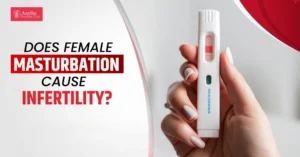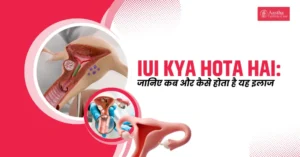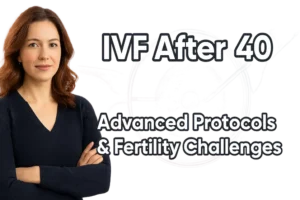The Reality of IVF Success Rates After 40
The journey to parenthood after 40 presents unique challenges, but advanced IVF protocols are offering new hope for women in this age group. At ages 38-40, the percentage drops to 25.1%, and for 41-42, it is 12.7%. For women older than 42, the IVF success rate is 4.1% for a singleton birth using the patient’s eggs, according to SART. However, these statistics tell only part of the story.
Recent data shows more encouraging outcomes when examining cumulative success rates. For women aged 40-41 when they started, there was a 13 per cent chance of a baby after one cycle, a 21 per cent chance after two cycles and a 25 per cent chance after three cycles. This demonstrates the importance of considering multiple treatment cycles and advanced protocols specifically designed for older patients.

Understanding Age-Related Fertility Challenges
1. Diminished Ovarian Reserve
As women age, both the quantity and quality of eggs decline significantly. Dr. Sarah Johnson, reproductive endocrinologist at Cornell Medical Center, explains: “The primary challenge we face with patients over 40 is not just fewer eggs, but also an increased rate of chromosomal abnormalities in the remaining oocytes.”
2. Chromosomal Abnormalities
Recently, we estimated that in women aged 35–37, 38–40, 41–42, and >42 year we would need to collect ~5, 7, 10, and 20 oocytes, respectively, to find at least one euploid embryo. This research highlights why advanced protocols focus on maximizing both egg quantity and quality assessment.
3. Uterine Environment Changes
Advanced maternal age also affects the uterine environment, potentially impacting implantation rates and pregnancy maintenance. Modern protocols address these changes through targeted hormonal support and advanced monitoring techniques.
Advanced IVF Protocols for Women Over 40
1. Mild Stimulation Protocols
A mild stimulation protocol is adopted by doctors for women above 40. As compared to standard stimulation protocol, this mild stimulation can be effective for older age groups. These protocols use:
- Lower gonadotropin doses: Reducing the risk of ovarian hyperstimulation while optimizing egg quality
- Natural cycle modifications: Working with the body’s natural hormone patterns
- Dual trigger protocols: Using both hCG and GnRH agonist to improve egg maturation
2. Advanced Laboratory Techniques
Time-Lapse Embryo Monitoring
Thirdly, look for clinics that use time-lapse technology in their labs. Time-lapse incubators provide:
- Continuous embryo monitoring without disturbance
- Better selection of viable embryos
- Improved pregnancy rates in older patients
Extended Culture to Blastocyst Stage
Advanced embryology labs now routinely culture embryos to day 5-6 blastocyst stage, allowing for:
- Natural selection of the strongest embryos
- Better synchronization with uterine receptivity
- Higher implantation rates per transfer
3. Preimplantation Genetic Testing (PGT-A)
Many clinics now offer specialized programs for older patients. These programs often include advanced techniques like preimplantation genetic testing (PGT). PGT helps select embryos with the best chances of success.
Benefits of PGT-A for patients over 40:
- Identifies chromosomally normal embryos
- Reduces miscarriage risk
- Increases live birth rates per transfer
- Enables single embryo transfer
4. Hormone Optimization Protocols
DHEA Supplementation
Research suggests DHEA (dehydroepiandrosterone) supplementation may improve:
- Ovarian response to stimulation
- Embryo quality
- Overall pregnancy rates
Growth Hormone Co-treatment
Selected patients may benefit from growth hormone supplementation, which can enhance:
- Follicular development
- Oocyte quality
- Endometrial receptivity
Specialized Treatment Options for IVF After 40
Mini-IVF Protocols
The best solution for such patients is the mini-IVF protocol using a very highly specialized pure air environment of the highest industrial “clean room” grade, and an absolutely safe and reliable system for embryo freezing, and a uniquely mild ovarian stimulation protocol.
While some clinics advocate for mini-IVF, recent evidence suggests that regular IVF, which aims to encourage the development of as many eggs as possible and is safe in one cycle, has much higher pregnancy rates than mini IVF for women over 40.
Egg Donation Considerations
The use of donor eggs is an option that women over 40 can consider during IVF treatment. Donor eggs are retrieved from young, healthy women, increasing the chances of a successful pregnancy. Success rates with donor eggs approach those of younger patients, typically 60-70% per fresh transfer.
Advanced Diagnostic Testing Before Treatment
Comprehensive Ovarian Reserve Assessment
- AMH (Anti-Müllerian Hormone): Indicates egg quantity
- Antral Follicle Count: Ultrasound assessment of available follicles
- FSH/LH levels: Hormonal indicators of ovarian function
- Inhibin B: Additional marker of ovarian reserve
Genetic Counseling and Testing
- Carrier screening: Identifying genetic risk factors
- Karyotype analysis: Chromosomal evaluation for both partners
- Thrombophilia testing: Blood clotting disorder assessment
Uterine Assessment
- 3D ultrasound: Detailed uterine anatomy evaluation
- Hysteroscopy: Direct visualization of uterine cavity
- Endometrial receptivity testing: Optimal timing for implantation
Lifestyle Optimization Strategies
Nutritional Support
- CoQ10 supplementation: Supports mitochondrial function in eggs
- Folate and B-vitamins: Essential for cell division
- Omega-3 fatty acids: Reduce inflammation and support egg quality
- Mediterranean diet: Associated with improved IVF outcomes
Stress Management
- Acupuncture: May improve blood flow and reduce stress
- Meditation and yoga: Stress reduction techniques
- Counseling support: Addressing the emotional aspects of treatment
Choosing the Right Clinic and Specialist
Key Factors to Consider
- Experience with advanced maternal age patients
- Access to latest laboratory technology
- Comprehensive genetic testing capabilities
- Individualized treatment protocols
- Emotional support services
Questions to Ask Your IVF Specialists
- What is your success rate specifically for my age group?
- Which stimulation protocol do you recommend for my situation?
- Do you offer PGT-A testing in-house?
- What complementary treatments do you recommend?
- How many treatment cycles do you typically recommend?
Financial Considerations and Planning
Insurance Coverage
- Many insurance plans have limited coverage for patients over 40
- Some states mandate coverage regardless of age
- Consider supplemental fertility insurance options
Treatment Cost Factors
- Multiple cycles may be necessary
- PGT-A testing adds additional costs
- Egg donation significantly increases expenses
- Factor in medication and monitoring costs
Success Stories and Realistic Expectations
While success rates decline with age, many women over 40 achieve successful pregnancies through IVF. Over 75% of CHR have IVF After 40. Nearly 60% are over 42 and nearly half are over 44. In vitro fertilization success rates decline with age, but many women in their early and mid-40s can still conceive with their own eggs if they are given appropriate treatment protocols.
The key to success often lies in:
- Working with experienced specialists
- Following personalized protocols
- Maintaining realistic expectations
- Being prepared for multiple treatment cycles
- Considering all available options, including egg donation
Looking Ahead: Future Innovations
Emerging Technologies
- Artificial intelligence: Improving embryo selection accuracy
- Ovarian tissue freezing and transplantation: Restoring fertility potential
- Mitochondrial replacement therapy: Addressing age-related cellular dysfunction
- Advanced genomic screening: More comprehensive embryo assessment
Research Developments
Ongoing research focuses on understanding IVF After 40 and reversing age-related changes in oocytes and the uterine environment, offering hope for even better outcomes in the future.
Conclusion
IVF after 40 presents unique challenges, but advanced protocols and technologies are dramatically improving success rates. The key is working with experienced reproductive specialists who understand the specific needs of older patients and can develop personalized treatment plans.
While success rates may be lower than in younger patients, the cumulative pregnancy rates over multiple cycles, combined with advanced techniques like PGT-A and optimized protocols, offer genuine hope for achieving a healthy pregnancy.
Life Changing Experiences with Aastha Fertility - From Doubt to Success
Remember, every individual’s situation is unique, and success depends on multiple factors including overall health, specific fertility diagnosis, and response to treatment. Consult with a Yaami Fertility to develop the most appropriate treatment plan for your specific circumstances.






Leave a comment